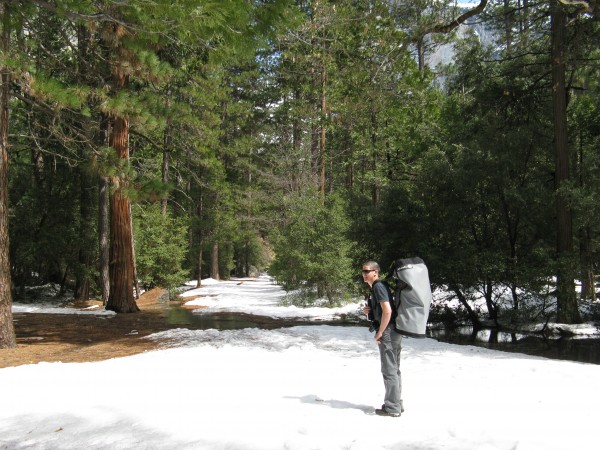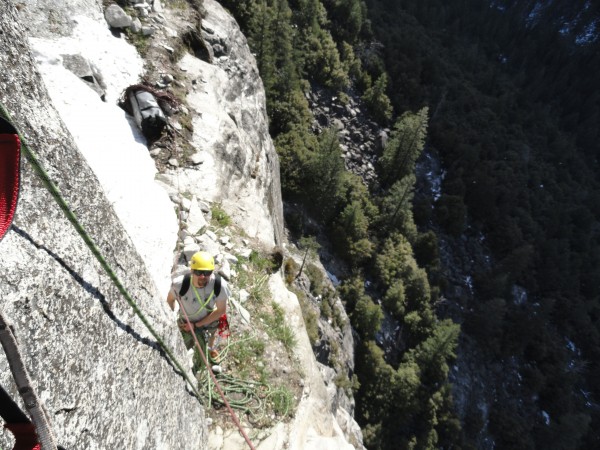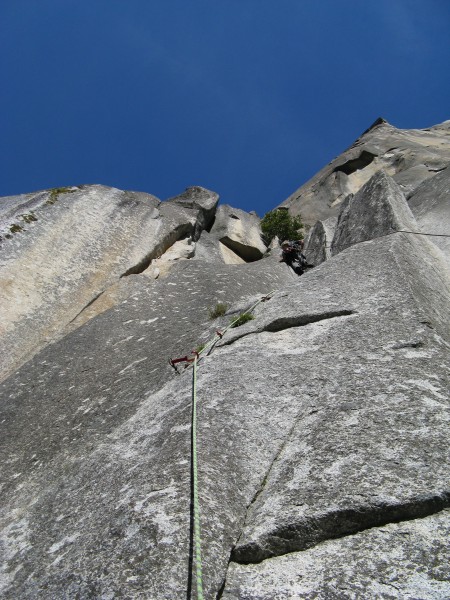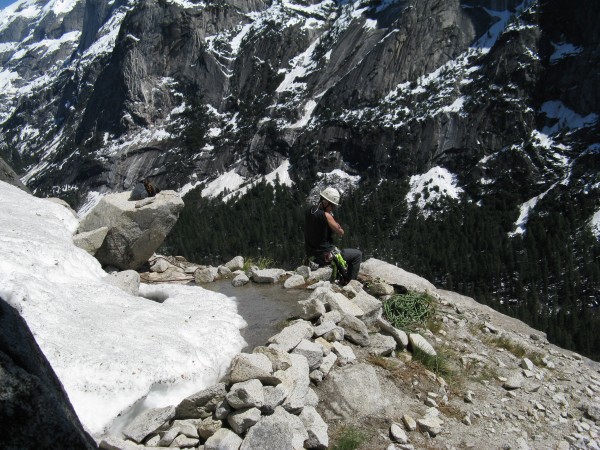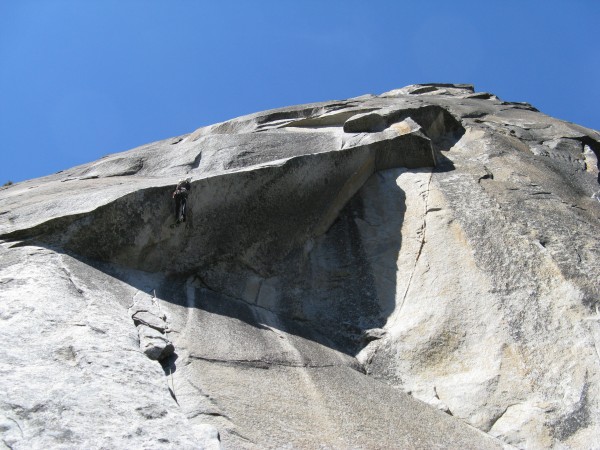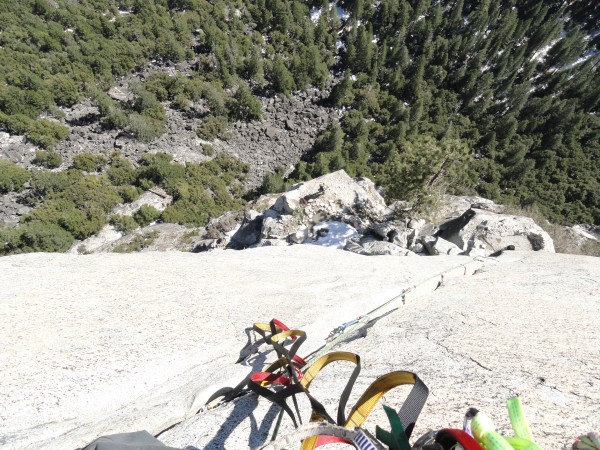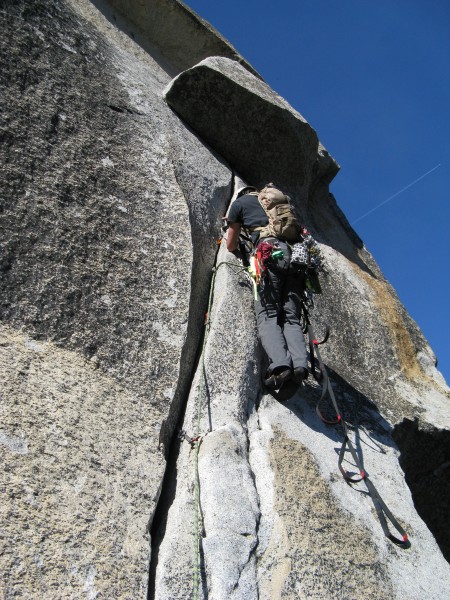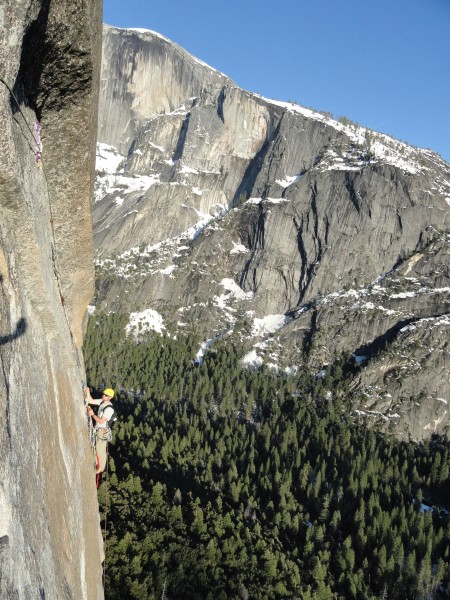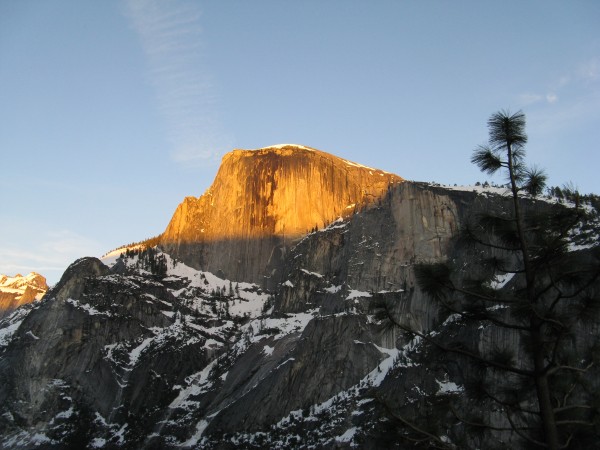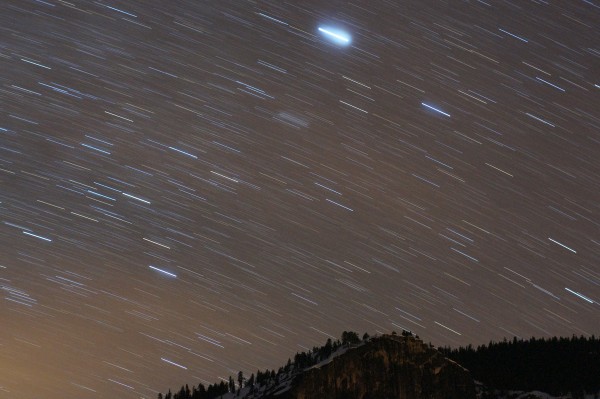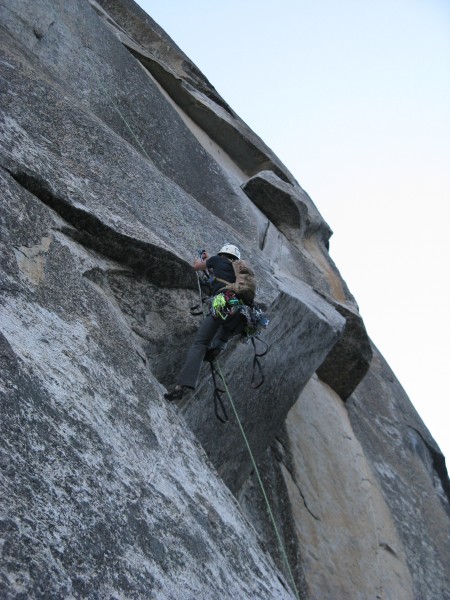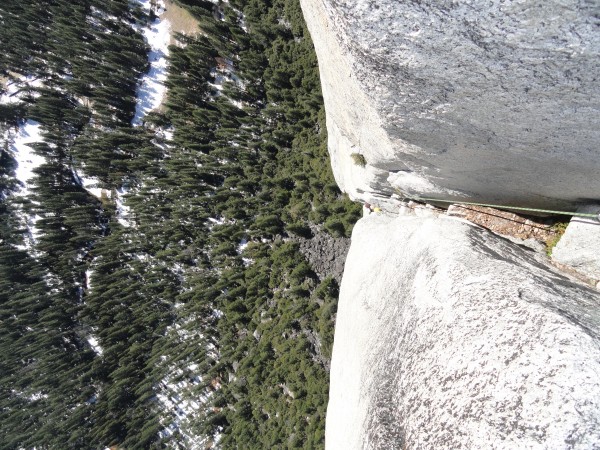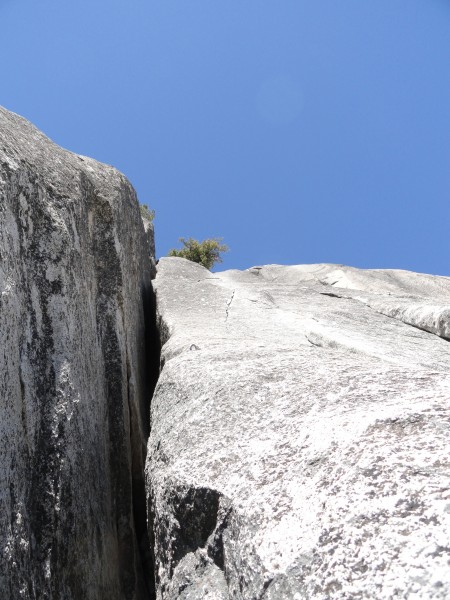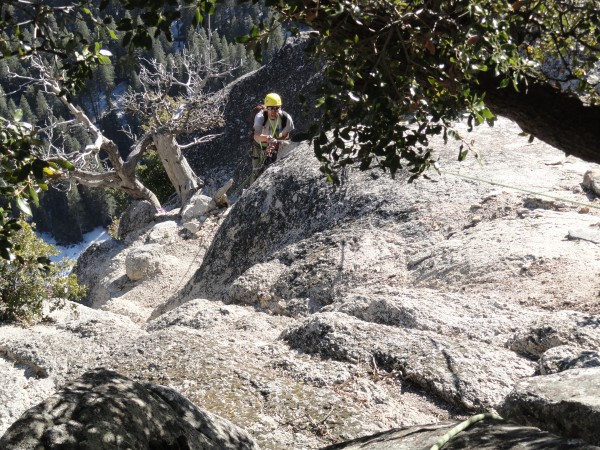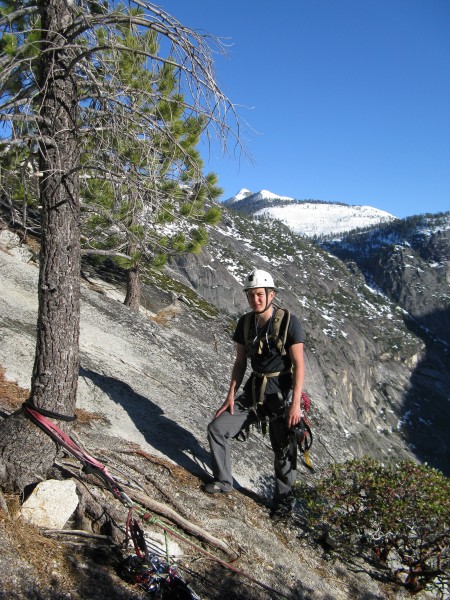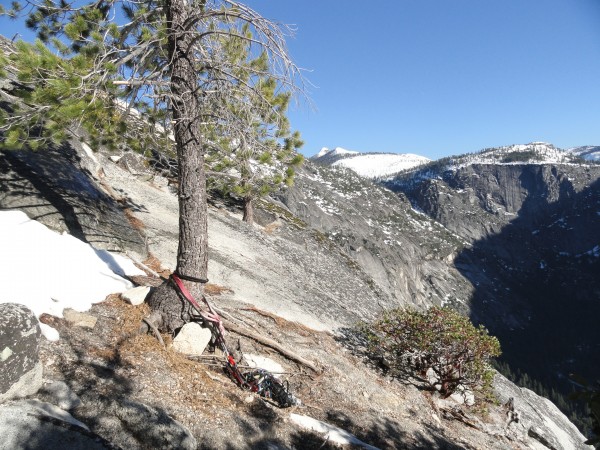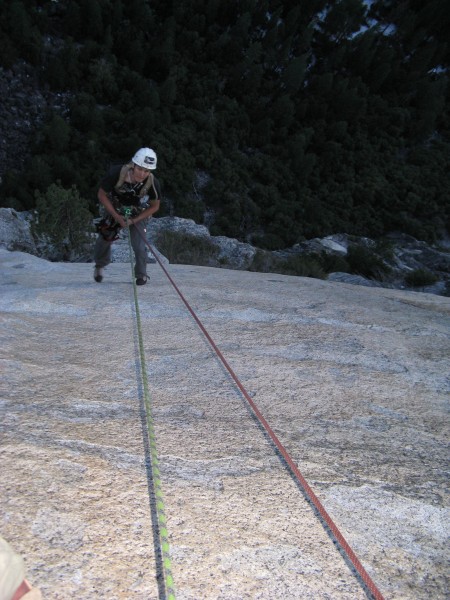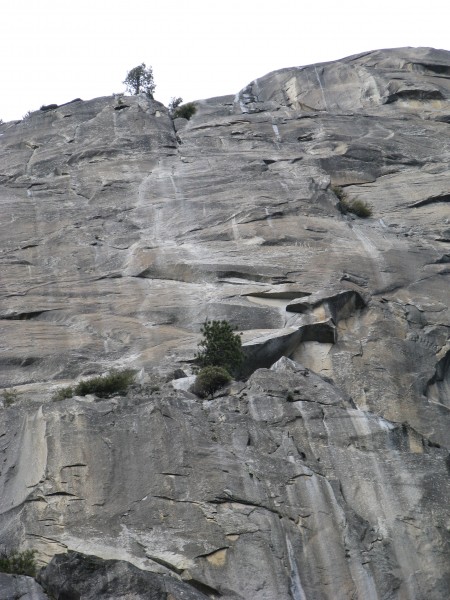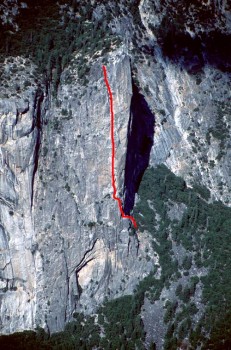Brief History about myself: I was born and raised in Hawaii, where there is very little rock climbing and I did none there. I moved to Portland, OR to go to school and I started climbing with my wife August 2009. I knew I would enjoy climbing, so before I even tried it, I spent $500 on all the gear to top rope. I had a friend show me the basics of anchor building and my wife and I went 2-3 times a week to top rope. I then started getting into leading and climbing at Smith Rock, OR. I watched a couple of climbing movies and I was always drawn to the trad climbing portions, especially in Yosemite. As I learned about the history and ethic of climbing in Yosemite, I was drawn to wall climbing. I decided I was going to climb a wall and started training. I was able to train in the nasty Portland weather and would aid on the wet rock. I had access to a warehouse and practiced jumaring, lowerouts, hauling, etc. I trained specifically to lead the whole route, and my buddy who was less experience trained specifically to follow the whole route. When we climbed the SF, I have been climbing a total of 1 years 7 months and my partner had been climbing a total of 1 year and 3 months. But we were up for the challenge. Work has led me back to Hawaii and for some reason I wanted to post a trip report. At the time (and currently, sadly) I was a 5.10 sport climber, 5.9 trad climber, and aiding novice. I am confident, but calculated.
Gear:
2 full sets of nuts (one set was all offset)
1 full set of BD cams from the smallest C3 - #4Camalot (I only use a couple C3's)
(between .5-1" I had triples with a mix of metolius and an offbrand of cams)
2 aiders with a cam hook on each biner
1 pully
Regular climbing gear: grigri, atc, runners, biners, etc.
We brought 5 2L bottles of water and we also drank snow.
Supertopo Big Wall beta
Itinerary:
March 29th (Tue) - Leave Portland and sleep in car outside of park
March 30th (Wed)- Arrive mid morning and find a spot in Camp 4 that is surrounded by a couple feet of snow, practice aid climbs on Swan Slab, hike up gear to base of SF, fix 1st pitch (I know it seems silly to fix a 5.8 pitch, but we had extra time, so why not?) Head back to camp 4 to spend the night
March 31st (Thur) - Start approach before sunrise. Got to dinner ledge around noon. Throw off snow on Brunch ledge because dinner ledge has too much snow. Fix up to the top of pitch 5 and as sun is setting get back down to brunch ledge for dinner.
April 1st (Fri) - Start jumarring the fixed line before sunrise, but there is still light. Top out while sun is still up, but getting pretty low at 6:00. We rapped back to dinner ledge and the sun had set at this point. We rap the first three pitches by headlamp. (Better to be rapping by headlamp then climbing by headlamp though.) Arrive to car at 10:00
April 2nd (Sat) - lay in fetal position and moan in exhaustion wishing my wife could. Wishing I could feel like I conquered my first wall, but I am very much the one that got conquered. We cut our trip a day short and left on sunday back to Portland.
I was fortunate to have a job that I could give a short notice to get time off and the weather looked good for several days and my buddy and I left. We arrived in the Valley wednesday March 30th and upon arrival we found out that there was a snow storm that wiped out electricity for two weeks. There was a lot of snow on the floor, but we assumed the south facing Washington Column would be good to go. We were the only party on the Column!
We arrived in the Valley mid morning and the first thing we did was practice aiding.
I knew I was going to be a slower leader, so we did all the preparation on Wednesday to give us the earliest start on Thursday. We decided to pack up our gear Wednesday afternoon for two reasons: The trail was covered in snow so we wanted to find it while there was light to see and secondly, it was better to start Thursday morning the least exhausted we could possibly be.
There are a lot of different cairns, but it will all get you to the same place. I highly recommend hiking the approach trail prior to the day you start the climb.
Although we would have preferred to bivy at the base, we decided to follow the park rules and head back to camp 4 for the night. We woke up early enough that when we parked our car, we still needed our headlamps and headed to the base. We jugged our fixed line and I began to haul. I was intimidated by the trip reports I read about hauling this pitch, but honestly, I think if you learn how to haul before trying a wall, it is pretty easy.
2nd Pitch: Once you get to the top of the 1st pitch, walk across a huge sloping ledge to the anchor. Follow ST and this is straight forward. There were so much ants on this pitch! I aided this section. Climb to very visible bolted anchor.
Dinner Ledge:
4th Pitch (Kor Roof): Easy climbing that intuitively switches to aiding. I am a 5-10 guy and the bolts were not to far for me. You had to make some reachy moves, but it was very doable. The hard part is transitioning out of the roof and a cam hook worked perfectly here.
5th Pitch: Straight forward aiding. I had to do a hook (separate from a cam hook) move. Lesson learned on this pitch: keep the follower in mind when doing the traverse portion. I made my placements as far out as possible and I made it very difficult for my partner to clean. Penji is fun. Always start higher than you think you need to be because it is easier to get lowered after a few tries. Have the follower lower out.
Fix pitches and have plenty of time for dinner and relaxing:
Following morning: we wake up early and are jugging before the sunrises.
6th Pitch: Start again with more aid traversing and then head up. The mandatory 5.7 free move at the top of the pitch feels very hard after aiding for the last few hundred feet, but it is a 5.7 move.
7th Pitch: I used almost every piece of gear I had. On this pitch, a cam hook will save you so much time. I used it 8-10 times on this pitch leap frogging a lot of placements.
8th Pitch (Chimney Pitch): I did a mix of free/aid climbing to gain the chimney. Honestly, this was the most exhausting part of the route. I literally took my rack and pack off because it was so awkward. I would throw it up the chimney and climb some and repeat.
9th Pitch: Follow bolt out to gain thin crack. I aided this section. I don't remember what the anchor was or if it was hard to find, but I don't remember route finding being difficult at all. I think it was a tree anchor.
10th Pitch: We stopped taking pictures because of how tired we were. There was a block dihedral to the right that had a huge offwidth. Go to the right of that block. and climb up. There are some pitons to use. I mixed free/aided this section. There are a couple of ways to climb to 2nd half of this pitch and we opted to do the penji. There will be a huge pine tree to your left and pick your poison of which way you will climb to get up there. Really loose rock here. Use the tree as an anchor.
11th Pitch: We were so tired and the sun was getting lower, but still shining on the valley floor. We almost were content with this being our high point, but decided to go on through the last chossy pitch. Again, pick your poison of what you want to climb here. It's all low angle and all loose. Please be aware that dinner ledge is right were loose rocks will go. Climb until you get to a tree on top and anchor there.
We were completely exhausted. I have never worked my body so hard in my life. It actually took me a few days to recover because my fatigue was coupled with sickness. It was quite the achievement, but it was really hard work. A different partner and I were training a bunch to hopefully do half dome, but he broke his ankle two weeks before our trip down. Despite living in Hawaii now, I have ambitions to get a half dome and maybe a Nose ascent.
Key things to our success:
• Hiking up our gear the night before and getting familiar with the approach.
• Climbing in laced high-top trad shoes that were comfy enough to wear all day. I was able to do the free moves with ease and transitioning from free to aid to free climbing was very easy.
• I dedicated a lot of time to practice hauling and aiding months in advance when I really did just want to free climb.
• We brought a lot of water to keep us hydrated, although next time I will bring more.
• We literally saw no body else while we were on the wall so there were no other people that would have effected our success.
• Using cam hooks.
Some helpful beta photos.
I hope this helps you as you start getting into big walls! If you have any questions, shoot me an email at mycr8listemail@yahoo.com


